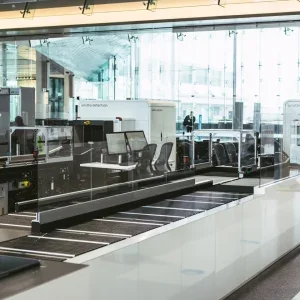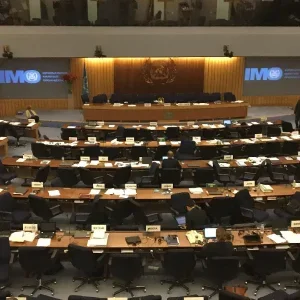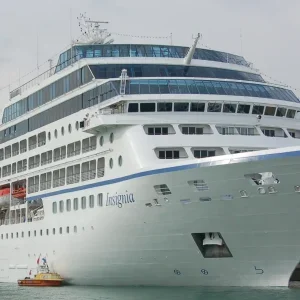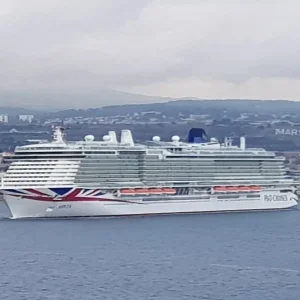In an industry that is constantly responding to the changing demands of its customers, there is always pressure on the supply chain to adapt, but as cruise lines open up new destinations, often in more remote parts of the world, the pressure on supply chain management (SCM) processes to keep pace is now greater than ever.
"Supply chain management has always been a challenge, and we have gotten used to that now. These days there is more precise planning in SCM and vendor selection," says Alvin Dennis, vice-president of purchasing and logistics at Norwegian Cruise Line.
Focusing effort and investment on SCM is not only essential to maintain high standards of service, but is also a potential source of savings. This, however, must be balanced against the need to address tighter security standards. SCM is all about achieving the right balance between speed, efficiency and reliability.
"In terms of economics, the goal is to increase profitability, but in the world market today, safety and security are also very important," says Giorgio Zagami, corporate procurement manager at MSC Cruises.
Zagami joined MSC Cruises in April 2012 to further develop the supply chain and procurement processes, bringing with him his experience of similar challenges at Costa and Carnival.
"Cruises go to new destinations, not just on standard itineraries, but also on world cruises. A global player has to develop an international supply chain in which safety and security are important considerations, so it is critical to have specification and qualification of suppliers and individual items," he explains.
SCM: a clear purchasing vision
Changing itineraries can add another layer of complexity to supply chains that must already bring together diverse geographies and a multitude of suppliers, so effective SCM relies on achieving full visibility across the purchasing function. This visibility comes from a centralised system that can execute and report on purchasing activity across all destinations. Alongside this, however, local relationships with suppliers are every bit as important.
"It is easier for us to work with partner suppliers, but we will also work with new suppliers, and for that you need a process through which to qualify them, especially in new locations," says Zagami. "You need a very efficient process in terms of exchanging information, but you also have to visit suppliers in person.
"There is a big effort being made to qualify items, which means writing a specification of what you need, getting the right quotes and then having processes to check the items either in the warehouse or onboard. These local relationships extend beyond the purchase of regional produce to encompass logistics operations.
In every area of purchasing and transport, reliability and quality are of the utmost importance, so the interaction between central planning and local expertise is a defining factor in the success of SCM processes.
"You need local knowledge of destinations and we are very reliant on our supply chain partners – vendors, carriers, transport companies," says Norwegian Cruise Line’s Dennis. "Mainly, our SCM processes are centrally planned, but we work with our ships and our local operations teams. It is very much a team effort.
"The management is centralised, but we make local purchases, while ensuring that our quality expectations are met."
Local and global supply management
Cruise lines continue to put a lot of effort into achieving the right balance between centralised and localised management.
"While SCM is centralised for efficiency and governance, we also have a lot of local expertise," says Zagami. "If we are buying in Brazil, for example, we need someone who knows the Brazilian market, but the purchasing and management processes are centralised at the company’s main headquarters. The local presence, however, is important for building long-term relationships with suppliers, which is how we want to work.
"So, during a season, we check and develop relationships with suppliers through a local operation," he continues. "When it comes to food, for instance, we have someone in Italy working with producers making pasta, and we have a lot of similar relationships around the world, as we want to get the best local tastes at each destination. Aside from food, purchasing many other items locally is also more economical."
Although such capabilities are now prerequisites for any SCM technology, constant effort is made to increase the functionality of software tools for the cruise industry, which is some way behind other industries in its use of newer applications.
One example is e-auctions, in which deals are negotiated online to allow suppliers to compete to provide the best offer. Such auctions have enabled many cruise lines to make major improvements in the performance of their supply chains and have resulted in significant savings, but they are among the tools that are still not used to maximum potential within the industry as a whole.
"Cruise is a unique category of industry. It is about service, but it has the same economies of scale as lots of other industries that make physical goods," explains Zagami. "This means technology is a key part of managing the supply chain. We need information systems that can help not only with planning and the management of relationships with suppliers, but also to support logistics operations.
"For instance, web integration with some suppliers is an important issue now. There is technology already in place and software vendors are developing tools specifically for the industry, but they still need to be fully implemented. There are tools that already exist, such as e-auctions and systems for exchanging data over the web, and these have been fully implemented in some industries, but not yet in the cruise sector."
Cruise-defined expertise and visibility
The demand for technological solutions exists within the cruise sector, but there is a belief that the tools currently available need more customisation in order to match the unique needs of the industry. That said, there is clear evidence that the tools already in use are delivering significant benefits in terms of visibility and efficiency.
"We need expertise and technology," says Dennis. "The technology provides visibility and helps us communicate with vendors, which are more partners than suppliers. You need full visibility of the supply chain – from ordering and vendor selection to the delivery of goods to ships. The technology we have allows us to send all our bids out to our vendors, and we have invested heavily in that technology recently. The key is to have the same technology on the ships that we have across the whole company.
"That makes it easier to manage as everyone in the supply chain has the same information," he continues. "This benefits the cruise line and the suppliers, too. We need suppliers – and logistics providers – with the right technology to support our business. Furthermore, technology keeps down our SCM costs as we need fewer personnel in that area and can move those people into other parts of the business, plus the supply chain becomes more reliable. It all comes down to visibility."
Within the industry, there is a solid base of technology deployment on which to base future enhancements, and equally there is a desire among cruise operators to make the necessary investment because SCM is such a fundamental factor in defining their quality of service.
"In terms of future progress, SCM is always something we are looking to improve, and a good global procurement strategy means constant research and development, not only into technology but also into skills," says Zagami. "The industry could develop more global partnerships in many areas such as product customisation, packaging, shipping and many more."
In an industry that is constantly looking to improve the performance of the supply chain, the future will depend very much on working closely with suppliers and software vendors to put in place the most effective software tools.






